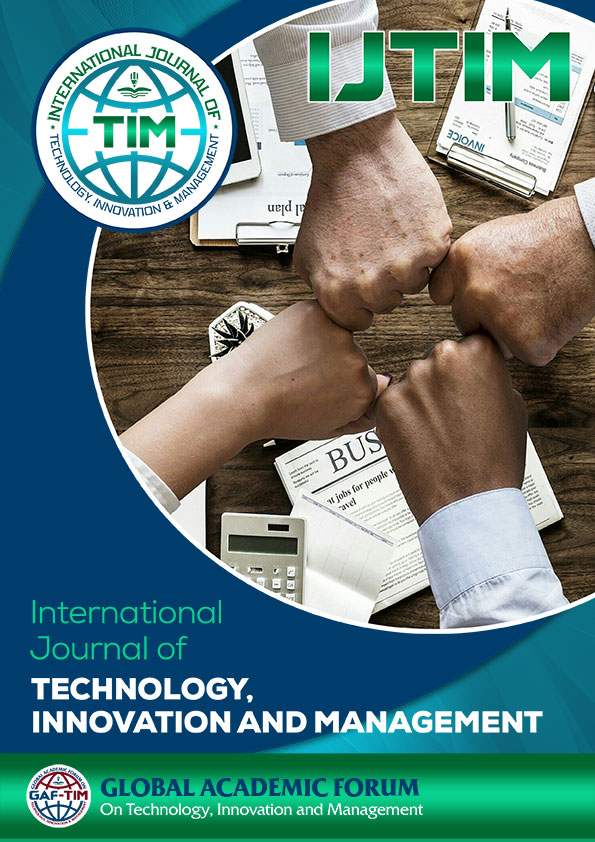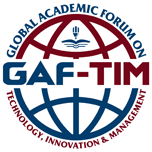Strategic Expansion and Dynamic Capacity Enhancement in Lion Tourism: Analyzing Advanced Deployment for Sustainable Growth
DOI:
https://doi.org/10.54489/ijtim.v3i2.250Keywords:
Dynamic Capabilities, Competitive Advantage, Travel Industry, Lion TourismAbstract
Sustained growth and competitive advantage have always been the goals that enterprises strive to find and practice. This study uses the "positioning", "process" and "path" aspects of the dynamic capability perspective, and divides the stages according to "time sequence", to explore how enterprises adjust their organizational structure and practices in order to enhance their competitive advantages in a rapidly changing environment. Adapt to changing environments. This study uses a single case study to summarize the 35-year development process of Lion Tourism; summarizes the "events" that occurred in the "time sequence" into the perspective of dynamic capabilities, and explains how Lion Tourism responds to opportunities, advances deployment, and quickly adjusts Organizational structure and development strategy to ensure continuous growth and competitive advantage. Dynamic capabilities are more suitable for application in industries with rapidly changing environments. However, through the events experienced by the case companies, the theoretical model of the empirical dynamic capabilities’ viewpoint can be used as a basis for academic research models. Moreover, the case can be used as a reference for other travel industry peers. It can also determine the direction of industrial practice and provide a reference for managers' strategic operations. The paper concludes with theoretical and practical implications, dynamic capability testing, and future research recommendations.
References
Administrative Science Quarterly, 41(1), 116-145.
Aoki, M.(1990).The participatory generation of information rents and the theory of the firm, In M. Aoki, B.Gustafsson, and O.E. Williamon (eds.), The Firm as a Nuxus of Treaties, London: Sage.
Chen Qinghui (2020). The physical layout of the tourism industry has undergone a major reshuffle. Shang Zhou database, taken from https://www.businessweekly.com.tw/
Chen, Yiling. (2013). Ten Billion Tourism Kingdom Evolution Theory. Cheersy magazine, issue 156, taken from https://www.cheers.com.tw
Eisenhardt, M. K., & Martin, A. J.(2000). Dynamic capabilities: What are they? Strategic Management Journal, 21(10/11), 1105-1121. DOI: https://doi.org/10.1002/1097-0266(200010/11)21:10/11<1105::AID-SMJ133>3.0.CO;2-E
Ethiraj, S. K., Kale, P., Krishnan, M. S., & Singh, J. V.(2005). Where do capabilities come from and how do they matter? A study in the software service industry. DOI: https://doi.org/10.1002/smj.433
Strategic Management Journal, 26(1), 25-45.
Feuerstein, R.(1979).The Dynamic Assessment of retarded performers: The learning potential assessment device theory. Instruments and Techniques, Glenview, IL: Scott, Foresman and Company.
Griffith, D. A., & Harvey, M. G. (2001). A Resource Perspective of Global Dynamic Capabilities. Journal of International Business Studies, 32(3),597-606. DOI: https://doi.org/10.1057/palgrave.jibs.8490987
Hamel, G.(1991).Competition for competence and inter- partner learning within international strategic alliances. Strategic Management Journal, 12, special DOI: https://doi.org/10.1002/smj.4250120908
Helfat, C., Finkelstein, S., Mitchell, W., Peteraf, M., Singh, H., Teece, D. & Winter, S.(2007). Dynamic Capabilities: Understanding Strategic Change in Organizations. Malden, MA: Blackwell.
Helfat, E. C.(1997). Know-how and asset complementarity and dynamic capability accumulation: The case of R&D. Strategic Management Journal, 18(5), 339-360. DOI: https://doi.org/10.1002/(SICI)1097-0266(199705)18:5<339::AID-SMJ883>3.0.CO;2-7
issue, 83-103.
Lee, J., Lee, K., & Rho, S.(2002). An Evolutionary Perspective on Strategic Group Emergence: A Genetic Algorithm-based Model. Strategic Management Journal, 23, 727-746. DOI: https://doi.org/10.1002/smj.250
Liang Renwei (2012). Wang Wenjie created the legend of the lion's tens of billions of tourism kingdom. This Weekly, Issue 806. taken from https://www.businesstoday.com.tw/
Lion Travel Website (2023). take from https://www.liontravel.com/ Open Information Observatory (2021). Lion Travel Agency Co., Ltd.-2731- annual Financial Report 2012-2022. taken from https://mops.twse.com.tw/
Luo, Y.(2000). Dynamic capabilities in international expansion. Journal of World Business, 35(4), 355-378. DOI: https://doi.org/10.1016/S1090-9516(00)00043-2
Nelson, R., & Winter, S. G.(1982). An Evolutionary Theory of Economic Change. MA: Cambridge Belknap Press of Harvard University Press.
Next Magazine (2013). Lion Group Chairman Wang Wenjie. Entrepreneur e becomes king, 09-26 edition, taken from https://tw.nextmgz.com/
Penrose, E.(1959). The Theory of the Growth of the Firm.
London: Basil Black-well.
Powell, W. W., Koput, K.W., & Smith-Doerr, L.(1996). Interorganizational collaboration and the locus of innovation: Networks of learning in biotechnology. DOI: https://doi.org/10.2307/2393988
Spanos, Y.E., & Lioukas, S.(2001). An examination into the causal logic of rent generation: contrasting Porter, competitive strategy framework and the resource- based perspective. Strategic Management Journal, 22, 907-934. DOI: https://doi.org/10.1002/smj.174
Teece, D. J.(1998). Capturing value from knowledge assets: The new economy, markets for know-how, and intangible assets. California Management Review, 40, 55-79. DOI: https://doi.org/10.2307/41165943
Teece, D. J., Pisano, G., & Shuen, A.(1997).Dynamic capabilities and strategic Management. Strategic Management Journal, 18(7), 509-533. DOI: https://doi.org/10.1002/(SICI)1097-0266(199708)18:7<509::AID-SMJ882>3.0.CO;2-Z
Teece, D.J., & Pisano, G.(1994). The dynamic capabilities of firms: an introduction. Industrial and Corporate Change, 3, 537-556. DOI: https://doi.org/10.1093/icc/3.3.537-a
Tourism Bureau, Ministry of Communications, Republic of China (2019). Tourism Development of Regulations - Additional Regulations. taken from https://law.moj.gov.tw/
Wang, C. L., & Ahmed, P .K.(2007). Dynamic Capabilities: A Review and Research Agenda. International Journal of Management Reviews, 9 (1),31–51. DOI: https://doi.org/10.1111/j.1468-2370.2007.00201.x
Wang, Guoqin., Luo, Xiangfei., Chen, Wenyu., & Chen, Ruilun. (2019). Exclusive interviews and case studies of top companies from both sides of the Taiwan Strait - The story of the Lion Group. New Taipei City: Psychological Publishing House.
Xin Media (2012). Create a world-class tourism brand. Journey to the World, Issue 16. taken from https://solomo.xinmedia.com/
Yin, K. R.(1994).Case Study Research: Design and Methods.
London: Sage.
Yong, Weishe., & Hong, Shizhang. (2006). Discuss the rise of BenQ from the perspective of dynamic capabilities. Management and Systems, 13(1), 99-120.
Zahra, S. A., & George, G.(2002). Absorptive Capacity: A Review Reconceptualization and Extension. Academy of Management Review, 27 (2),185-203. DOI: https://doi.org/10.5465/amr.2002.6587995
Zahra, S. A., Sapienza, H. J., & Davidsson, P. (2006). Entrepreneurship and Dynamic Capabilities: A Review, Model and Research Agenda. Journal of Management Studies, 43(4), 917-955. DOI: https://doi.org/10.1111/j.1467-6486.2006.00616.x
Zott, C.(2003). Dynamic capabilities and the emergence of intra-industry differential firm performance: Insights from a simulation study. Strategic Management Journal, 24(2), 97-125. DOI: https://doi.org/10.1002/smj.288















